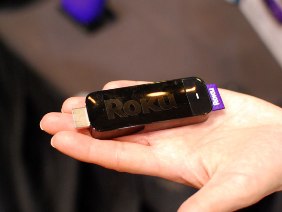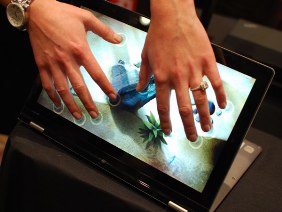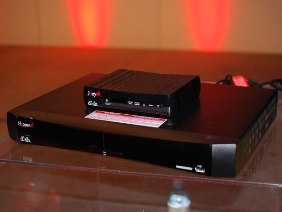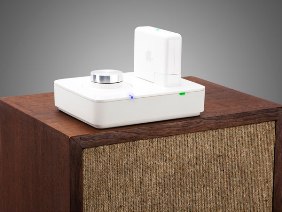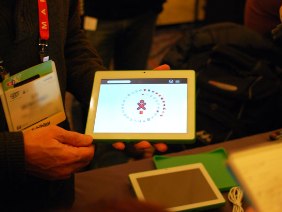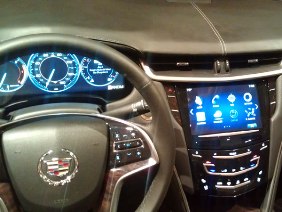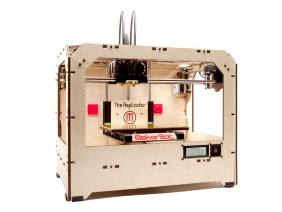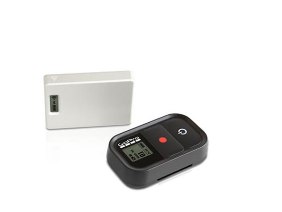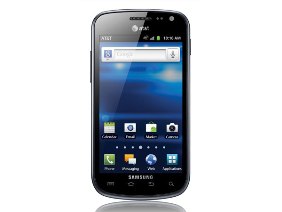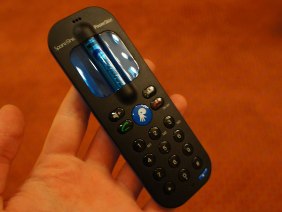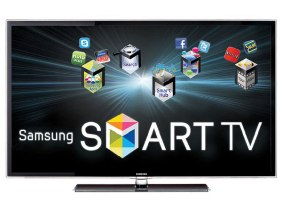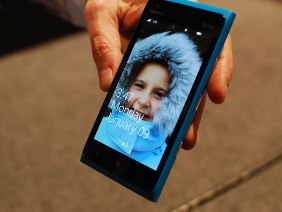The TouchPad tablet from Hewlett-Packard was one of the most closely watched new gadgets of 2011 — and quickly turned out to be the year’s biggest flop. The TouchPad, which was supposed to be a rival to Apple’s iPad, lasted just seven weeks on the market before H.P. killed it, citing weak sales.
Analysts point to a long list of factors behind the tablet’s quick demise. But some of the people involved in creating the tablet’s core software now say the product barely had a fighting chance.
That software is called WebOS, an operating system built on the same technology used by many Web browsers. It promised to be more flexible and open than Apple’s tightly controlled iOS software, and more beautiful than Google’s sometimes wonky Android system. H.P. acquired Palm, the maker of WebOS, for $1.2 billion in 2010 so it could use the software in products like the TouchPad.
WebOS turned out to be something of a toxic asset. Several former Palm and H.P. employees involved in WebOS say that there was little hope for the software from the beginning, because the way it was built was so deeply flawed.
“Palm was ahead of its time in trying to build a phone software platform using Web technology, and we just weren’t able to execute such an ambitious and breakthrough design,” said Paul Mercer, former senior director of software at Palm, who oversaw the interface design of WebOS and recruited crucial members of the team. “Perhaps it never could have been executed because the technology wasn’t there yet.”
The WebOS story also illustrates how hard it will be for anyone to mount a serious challenge to Apple and Google when it comes to mobile operating systems. Those two companies have won dominant market shares and the allegiance of thousands of app developers. Many other companies have chosen Android for their phones and tablets, but this ties them closely to Google and makes it hard to stand out in the crowd of Android products. By owning WebOS, H.P. could control both the hardware and software and gain a more direct relationship with customers.
And Palm’s sales pitch was that because the operating system was based on common Web technology, it would be easier to create software for it, which would attract programmers to make WebOS apps.
But WebOS had problems from the start, when Palm first created it for the Pre smartphone, former Palm employees say.
Mr. Mercer was well known in the design world for his contributions to several of Apple’s most important products, and Palm recruited him. After some internal debate, the company chose to have WebOS rely on WebKit, an open-source software engine used by browsers to display Web pages. Mr. Mercer said that this was a mistake because it prevented applications from running fast enough to be on par with the iPhone. But a former member of the WebOS app development team said the core issue with WebOS was actually Palm’s inability to turn it into a platform that could capture the enthusiasm and loyalty of outside programmers. There were neither the right leaders nor the right engineers to do the job, said this person, who declined to be named because he still had some ties to H.P.
From concept to creation, WebOS was developed in about nine months, this person said, and the company took some shortcuts. With a project like this, programmers typically start by creating the equivalent of building blocks that can be reused and combined to create different applications. But with WebOS, Palm employees initially constructed each app from scratch. Later, they made such blocks, but they were overhauled once by Palm and then again by H.P., forcing programmers to relearn how to build WebOS apps.
Another issue was recruiting. In 2009, it was hard to find programmers who had a keen understanding of WebKit, Mr. Mercer said, and Apple and Google had already snatched up most of the top talent.
Some former employees pointed fingers at Jon Rubinstein, then Palm’s chief executive, saying he failed to steer WebOS in the right direction. The former employees said that because of his hardware background, he did not understand the logistics of creating a powerful new operating system, and he was ultimately responsible for the decision to rely on WebKit. Mr. Rubinstein is still at H.P., which declined to make him available for comment.
The Pre went on sale in June 2009 and received generally glowing reviews from critics, who called it a solid device with innovative design elements that rivaled the iPhone. Sprint said it was its fastest-selling phone ever.
But customers immediately recognized that the phone was too slow, said the former Palm employee who worked on apps, and “this led to extremely high return rates.” There were also complaints about the phone spontaneously restarting itself or freezing up.
The company had enough staff to get the Pre out the door, but it underestimated how many people it would need to make improvements, the former employee said.
Just six months after the Pre’s introduction, a Northeast Securities analyst said that its sales were in “substantial decline.”
Palm put itself up for sale in April 2010. It soon attracted H.P., which hoped to use WebOS to accelerate its smartphone and tablet efforts.
But as H.P. absorbed Palm, important members of the WebOS team were disappearing. Mr. Mercer had already left. Peter Skillman, vice president of design at Palm, eventually left for a job at Nokia. Matias Duarte, vice president of human interface and user experience for WebOS, left a month after the acquisition for a job at Google. Several people said his departure was a major loss. “He wasWebOS,” the former member of the WebOS software team said of Mr. Duarte. “When he left, the vacuum was just palpable. What you’re seeing is frankly a bunch of fourth- and fifth-stringers jumping onto WebOS in the wake of Duarte’s leaving.” Mr. Duarte did not respond to a request for an interview.
H.P. would soon go through its own major changes. In August 2010, Mark Hurd, the chief executive, resigned amid accusations of sexual harassment, and H.P. named Léo Apotheker to replace him. Under Mr. Apotheker’s leadership, H.P. ramped up its WebOS investments, announcing two new smartphones and the TouchPad, the first WebOS tablet. Like Apple’s iPad, the TouchPad had a 9.7-inch touch screen and cost $500 for the cheapest model.
Mr. Apotheker said WebOS would expand to more devices, including PCs and printers. And what Palm lacked — resources, engineers and marketing power — H.P. would provide.
“Palm was a company starved for investment,” Mr. Apotheker said in an onstage interview at the D9 technology conference in June. “It didn’t have the reach, it didn’t have the capability. And despite creating some great technology, it couldn’t create the kind of quality in the final product and the hardware.”
The TouchPad shipped in July, months after Apple released the iPad 2, which was significantly thinner and faster, for the same $500 price tag. The new tablet got lukewarm reviews. “There’s no more guaranteed way to make something feel like a train wreck in slow motion than to make it run like it’s a train wreck in slow motion,” Matt Buchanan of Gizmodo wrote.
It was clear that the TouchPad was no hit, but it still shocked the tech world when H.P. withdrew it from the market so quickly — and said it would stop making WebOS hardware altogether. H.P. later said it would write off $3.3 billion, half of which came from the “wind-down of H.P.’s WebOS device business.”
A former employee in sales at Palm who worked on the WebOS team at H.P. said the company expanded the team with layers of vice presidents, and added hundreds of engineers to develop the TouchPad.
This person, who declined to be named because she did not want to comment publicly on internal matters at H.P., said many former Palm employees stayed at H.P. because they were passionate about WebOS. “The H.P. people came in and said H.P.’s vision is to put WebOS on all their hardware,” she said. “WebOS became their shiny new toy, but then they just abandoned it.”
In September, H.P. fired Mr. Apotheker, citing “weaknesses” in his ability to reach goals and communicate. His replacement was Meg Whitman, the former eBay chief.
Three months into the job, Ms. Whitman announced that H.P. would release the WebOS code for anyone to use, similar to Google’s open-source strategy with Android. If outside programmers and device makers end up improving the software, H.P. could presumably reconsider its decision to get out of WebOS hardware.
Ms. Whitman said 600 employees were still working on WebOS. “By contributing this innovation, H.P. unleashes the creativity of the open-source community to advance a new generation of applications and devices,” Ms. Whitman said in a statement.
Sam Greenblatt, chief technology officer at H.P., acknowledged in an interview that earlier versions of WebOS could be slow. But he said recent improvements in WebKit and WebOS over all had sped up performance. He shared H.P.’s continued ambitions for WebOS — that it would eventually expand into computers, televisions, even cars. “The No. 1 objective is to take the code to the next level,” he said.
But Mr. Mercer insisted that WebKit would still leave WebOS underpowered relative to Apple’s software.
“If the bar is to build Cupertino-class software in terms of responsiveness and beauty,” he said, “WebKit remains not ready for prime time, because the Web cannot deliver yet.”







